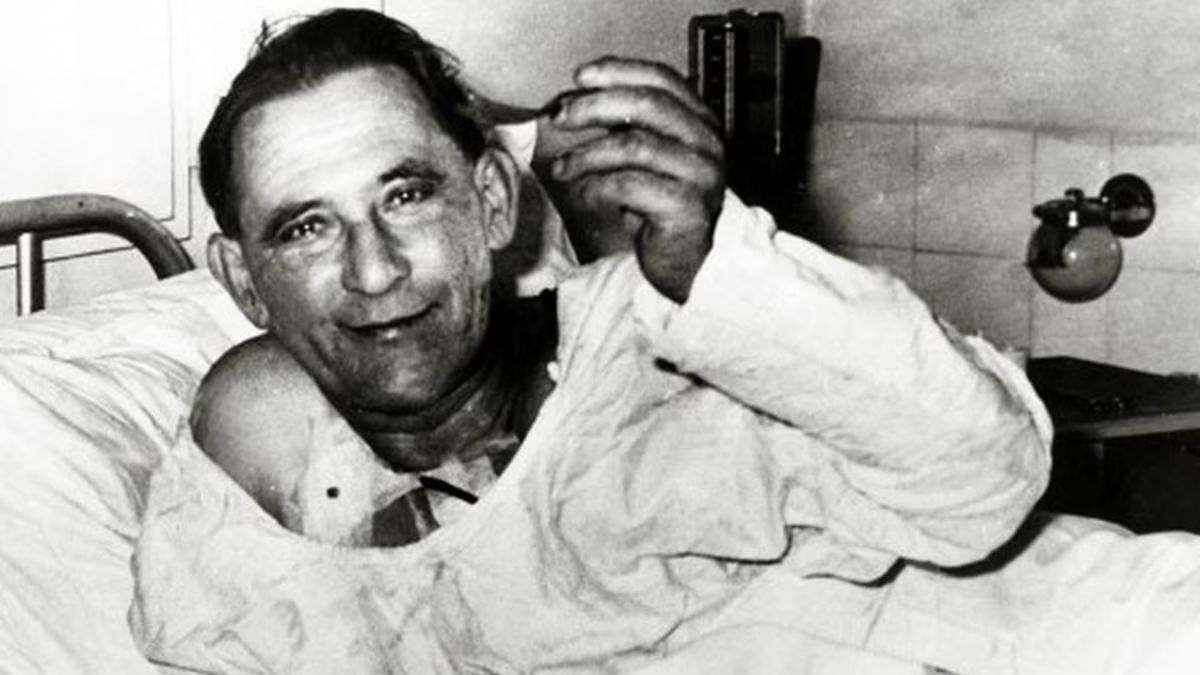Louis Washkansky, a 55-year-old South African businessman, was admitted to the Cape Town hospital suffering from cardiac sclerosis, a disease that left him with no hope of life.
The man knew his next end and listened with interest to the proposal of the surgeon Christian Barnard:
-“Would you be willing to be the first recipient of a heart transplant in the world?”
Washkansky had nothing to lose and gave his go-ahead. A short time later, a 25-year-old woman was in a car accident and was admitted to the hospital in agony. She died within hours and her family consented to her being the first heart donor.
The operation lasted 5 hours; towards the end of it, an electroshock set off the woman’s heart inside the man’s chest.
Although the recipient survived for only 18 days, his case opened new perspectives for medicine.
Dr. Barnard was 45 years old at the time. He had been trained for 7 years in the two most advanced countries in Cardiology: Russia and the United States.
For surgeons around the world, Barnard’s pioneering intervention was a signal to start. Just three days later, doctors in New York transplanted a foreign heart into a baby, although the child died a few hours later. And five years later, in 1972, a crucial advance, with the discovery of cyclosporine, made it possible to overcome the great impediment of this type of operation: immunological rejection.
From there, the medicine of transplants took an unexpected momentum. Towards the mid-90s, the survival rate increased to 85% survivors, one year after the operation. And 70% were still living five years later.
Today the average survival of transplant recipients is 12 years.
Only in our country about 100 hearts are implanted annually.
His interventions had many religious and racial criticisms. But Barnard knew that a microbe can push a slander and a giant cannot stop it. And he had – human at last – two weak flanks.
The first is his respect for his neighbor.
In his country, South Africa, “appartheid” was in force, that aberration that undermines people because of their color.
He introduced mixed-race nurses into his operating room-one of his sins-when that task was assigned only to white nurses.
But what was its other handicap? Well, separated from his wife, when he was 46 years old, he married a beautiful 19-year-old compatriot.
Separated again and being 62 years old, he married a 20-year-old model.
He confessed that he was not a pure man in front of the female sex, but made it clear that he valued purity. He knew that in the fight against instinct all Quixotes die.
At the beginning of 1983. Being 61 years old, with severe osteoarthritis in his hands, he indicated that he should stop surgery. And she did it with pain. But Barnard is already in the history of Medicine.
He was a true pioneer. Our country had the honor of being the second country in the Americas where a successful transplant was performed, although the patient survived for a short time.
Dr. Miguel Bellizzi, 41, performed it in Lanús, in Greater Buenos Aires. It was the 19th transplant in the world. An Argentine achievement, without a doubt, that took place only months after the first transplant.
And it came on September 2, 2001. Dr. Barnard was on vacation on the Greek island of Cyprus. When, a heart attack definitively devastated the heart of a man who saved hundreds of hearts and who could not save his own.
And a final aphorism for Christian Barnard who not only had ideas; but also had ideals.
“The obstinacy for an ideal immunizes against failures.”
Source: Ambito
David William is a talented author who has made a name for himself in the world of writing. He is a professional author who writes on a wide range of topics, from general interest to opinion news. David is currently working as a writer at 24 hours worlds where he brings his unique perspective and in-depth research to his articles, making them both informative and engaging.




